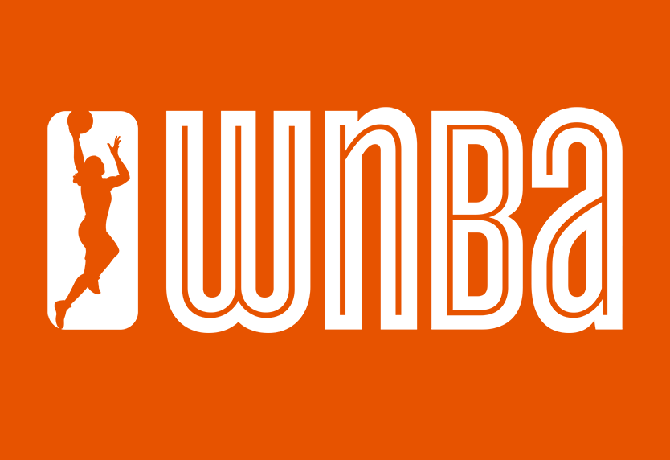A recent social media post about college coaches being hesitant to offer a prospect without knowing recruiting background provided inspiration for this post. Below I will outline the process by which I evaluate talent. Also, I will provide context on the recruiting process. I will detail what I believe are traits and characteristics of programs that are strong in the recruiting. I will point out fatal flaws of programs who fail to live up to expectations.
{This post is not intended to be critical of anybody nor at the industry in general. This is merely an observation of what works and what does not.}
Success on Wall Street is correlated with finding stocks/assets that are undervalued & buying. Or evaluating which assets in your portfolio are overvalued & selling.
Recruiting is the same skill set.
The coaches you describe wouldn’t succeed on Wall Street either.
— Jonathan Hemingway (@JLHemingwayPSB) August 10, 2018
My Background:
I began evaluating grassroots prospects in 2006 at Peach State Basketball tournaments. Since then I have evaluated talent at the nation’s largest tournaments and showcases (grassroots and high school) on both the male and female side of the ball. Since 2014 I have ran showcases across the Southeast and Midwest. Thousands of kids have trained and competed at these camps. You can read some of my work here:
2018 McDonald’s All-American Game Coverage (Male)
2018 McDonald’s All American Game Coverage (Female)
2017 Nike Tournament of Champions PHX (Female)
2017 PSB Summer Invite (Female)
2015 City of Palms Recap (Male)
2015 Coach Hemi Showcase (Female)
This is premium content for #CoachHemi Members only. Register today and pick your subscription preference. Gain access to Coach Hemi’s full playbook, coaching clinic notes and scouting reports from WNBA assignments.
CLICK HERE
[private]Evaluating Talent:
Key Areas
Skill / Specialty – What does a player well enough that will translate to the next level? A specialty is defined as something that a player can do better than everyone else on the court at any time.
Specialty areas: Shooting, Rebounding, Defending, Slashing / Penetrating, Passing and Playmaking
Athleticism – This is more than just the ability to run fast or jump high (although those are two big areas). Physical strength, body control, lateral quickness, athletic IQ are a few of the signs that a player is athletic.
Impact on the Game – Charting how much/often a player impacts the game with their play is important to note. Some players may check all the physical boxes and have a definitive specialty but disappear for stretches during the game. This matters. How much it matters should be weighed against the next category.
Potential – [private]There are players who we see, and we can tell that they have upside. This means that there are tools that are visible, but for whatever reason they are not producing at their full rate yet. The reasons for this vary. It could be the player is young and still figuring out how to play the game. It may be that they started play the game later than other players. It could be that they are being played out of position by their current coach. Or they could be in the process of switching positions. College coaches may believe when they get a player like this they can help them reach their ceiling. And often they can. However, there are the players that never reach their potential. These are sometimes call Coach Killers. These players tease coaches with what could be, but often never produce they way the coach hoped.
Position – While the term positionless basketball is becoming popular, coaches still want to know where they can play a player in their system. This also serves an effective descriptive for what the player can do.
Size / Body Type – The social media masses will tell you that size does not matter on the basketball court. But the reality is the Morgan William (Mississippi State PG) is the exception not the rule. The more size, the more length that you have – the greater your ceiling will be at the next level. If a prospect is so good in the other areas, then perhaps their lack of size will not be an issue. However, if all things are equal – the 5-10 female PG is going to be more valuable than the 5-4 PG. Morgan William was exceptional in athleticism, defensive ability, play-making and competitiveness. Therefore, she became an All-SEC caliber player despite her lack of size.
Mental Makeup / Family Background – A player who exudes exceptional mental toughness, leadership abilities, on court vocal ability and off-court work ethic will get higher grades. Coaches love kids who are bought-in to a team concept and willing to bring extra effort to games and practices. Coach will say things like ‘you can win with a kid like that’ or ‘he/she is a program kid that you can build around.’ These are not box score stats or analytics that can be tracked, but the intangibles that can only be evaluated with the eye test or getting know the player personally.
Also, a player’s family background is important to note here. An overbearing father (or mother) who manipulates situations could be counter-productive for next level players. It has been observed in cases where a player will fail to produce, because they have had built in excuses while living with this type of parent. This is far from a 100% rule. Lonzo Ball for the Los Angeles Lakers is an exception here. However, just noting a family dynamic is important for coaches to recognize.
Academics – This is not an area that is relevant while evaluating on the court. However, bad grades can derail college aspirations even before they get off the ground. Conversely, a high academic qualifier is good information to have to pass along in scouting reports.
Characteristics of Programs who Recruit Well[private]
- They get players who are talented. (Duh)
There is not a coach that will get fired quicker than they coach who has the least amount of talent in the conference. But the point here is that there are coaches who may value certain skills more than the overall talent of the prospect. For instance, the coach who values shooting more than any thing else ends up getting players who can shoot but are deficient in every other area.
There is a balance with getting the most talented players versus players who can play in the coach’s system. See below.
- They get players who fit the coach’s system / personality
A coach who likes to play fast-paced and use pressure defense should probably recruit players who can play in that system. Also aligned with this idea is getting players who are suited to play in your conference. If your conference has many dominant post players, having a plan to go against those type of players is key.
Much in the same vein, getting players that can mesh with the head coach’s personality is important. A highly sarcastic coach will not blend well with a player who is emotionally sensitive.
- They evaluate players constantly.
The best coaches that I have been around on the recruiting trail can tell me stories about the players that they are recruiting. They know the player on court tendencies. More importantly they can accurately gauge how good the player is. For instance – “Player A is better than Player B, but Player C is better than both of them.”
- They have a realistic sense of what type of could play at their school
Sure every coach should strive to get the best players at their school every recruiting calendar year. However, if your school low major school and a future McDonald’s All-American lives in your city – should that mean you spend hours at night actively recruiting that player? Unless there is a family connection to the school…probably not.
At the same time, falling in love with the hometown hero and expecting he/she to deliver the same production when the talent may not translate is equally as destructive.
- They do not gauge their recruiting lists based on who the other schools are recruiting.
The kid who gets hot in July and rakes home a dozen offers in a week is often the result of coaches experiencing FOMO (Fear Of Missing Out). It usually starts with a couple of schools being impressed and then offering. Quickly other schools follow suit…is this because they saw the same performance and were impressed? Or had they seen the prospect earlier and were on the fence? Regardless – the schools that are ahead of the curve are the ones that typically win (especially at the low major and mid major levels).
There are exceptions of course. Duke and Kentucky on the men’s side are so successful they are usually the last to offer. This is because most men’s prospects dream for Coach K or Coach Cal to call. However, the rest of the collegiate world cannot afford to sit back aloofly while deciding
- Being careful with offering a player too early
There are always kids who are standouts in middle school or early in high school. They seem to dominate and are destined to stars at the next level. But we have all seen the kid who does not get better or perhaps was just bigger than everyone earlier in life. Schools have to evaluate whether this success is sustainable or not.
- The Stock Market Game ~ When to Offer? When to Back Off?
The investors who win on Wall Street are the ones who know when to buy and sell. “Buy Low, Sell High” is the mantra. It’s simple, but that is really the only way to profit. The other part of the market game is the analysis: How high will a stock rise? Or is there a possibility it could dip even lower.
The same logic occurs in recruiting. A coach may see a player playing on an outer court at a live period event and there are no coaches watching. You watch for a half and she checks a lot of the boxes you like for your program. A coach without foresight would say ‘no one is here watching, he/she must not be that good.’ A good recruiter would say, ‘this is a prospect that no one has seen yet, we can be the first ones in.’
Correlating this with the stock market, that player’s stock might be pennies on the dollar. If you evaluate that she could grow into a ‘1 dollar per share’ prospect, your two-cent investment would yield a 50x return. Whereas if you wait until the player has four offers, then he/she stock would be $0.75 and now your recruitment becomes much more ‘expensive’ and lessens your expected ROI (Return on Investment).
Some schools may not care about the initial share price. A perennial powerhouse may want to make sure the player is good enough before even offering. However, even UConn WBB seem to hand pick their talent at their own pace. They often get players ranked in the top 5, but they also get kids lower down the rankings. Whereas a program like Baylor WBB will wait until the last moment and swoop in with the offer.
The reasoning here is that when you have an established program like coach Kim Mulkey has, they can afford to pay the so-called premium on waiting. Less established programs would need to cultivate relationships earlier to ensure their target stays on board.
In the end, a program can only successful recruiting when they do a good job in both of the areas above. Evaluating talent appropriately and then executing proper timing in recruitment can lead to success.
[/private]

 Jonathan Hemingway is a National Evaluator for the ProspectsNation.com Hemingway serves on the Board of Selectors for the Naismith Trophy. also He is also the publisher of CoachHemi.com. He has been involved in the community since 1996 as a coach, camp director and evaluator. You can reach him via email at JonathanHemingway@PeachStateBasketball.com and follow him on twitter @JLHemingwayPSB
Jonathan Hemingway is a National Evaluator for the ProspectsNation.com Hemingway serves on the Board of Selectors for the Naismith Trophy. also He is also the publisher of CoachHemi.com. He has been involved in the community since 1996 as a coach, camp director and evaluator. You can reach him via email at JonathanHemingway@PeachStateBasketball.com and follow him on twitter @JLHemingwayPSB










